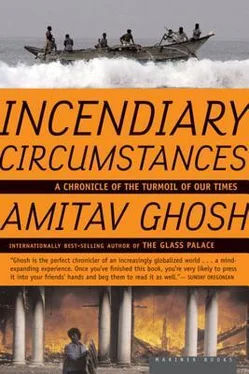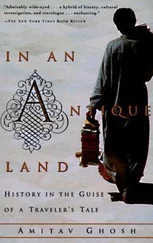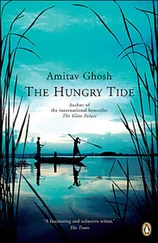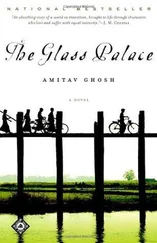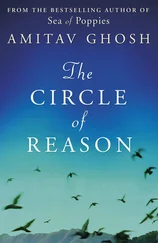Consider, for example, that the rhetoric of religious extremism is everywhere centered on issues that would have been regarded as profane, or worldly, or largely secular, a few generations ago: issues of state power, control of the bureaucracy, school curricula, the army, the law courts, banks, and other such institutions. Consider also that religious extremists are everywhere hostile to mainstream traditions of dissent within whatever religion they claim to be speaking for. Muslim extremists in the Middle East are contemptuous of the traditional Sufi tariqas ("ways" of schools) that have so long been a mainstay within popular Islam; the political leadership of the Hindu extremist movement treats traditional mendicants and ascetics as a source of embarrassment. In both instances, this hostility has its roots in peculiarly bourgeois anxieties about respectability and rationality.
There is also much evidence to show that as the concerns of the major religions have grown more and more sociological, their doctrines and institutions have also increasingly converged. Yet while we speak of doctrine, we are still within a domain that is recognizably religious. But the truth is that in those areas of the world that are currently beset by religious turmoil, we very rarely hear anyone speak of doctrine or faith. In many of these areas, by a curious inversion, the language of religious hatred is not a religious language at all. The voices that spew hate invariably draw on more incendiary sources. One of these is the language of quantity, of number — statistics, in other words, that famous syntax of falsehood. Such and such a group is growing too fast, they declare, its birthrate is so and so; it will soon become a majority, overtake another group that has nowhere else to go; that group will then be swamped, washed into the sea by the rising tide of enemies within. Equally, these voices borrow the language of academic historiography. They produce archaeological data to prove that such and such a group has no right to be here, that they are invaders who arrived later than some other, more authentically located peoples, whose claim to the land is therefore greater.
One of the more curious elements of these bizarre but all too real discourses is what might be called the logic of competitive vic-timhood. Group X, incontestably a majority in its own area, will declare itself to be the real minority because it is outnumbered if the surrounding regions are taken into account. Its ideologues will cite this as the reason that, to preserve itself, it must drive members of Group Y off its territory: Group Y, which appears to be a minority, is actually a majority; the members of Group X are the real victims. And so on.
Most of these ideologies share similar discourses on women: what women should wear, how they should comport themselves, when and if they should reproduce. And all this, we are told, because scripture or custom has ordained it so. I remember very well an incident that dates back some fourteen years, to a time when I was living in a village in Egypt. One day a schoolboy of fifteen — one of the brightest and most likable in the village — said to me, "Do you know what I did today? I gave my mother and the womenfolk in the house a stern talking-to. I told them that they could not go to the burial ground anymore to pray at our family's tombs."
I was taken aback by this. So far as I knew, the custom of visiting tombs was a very old one, and it served the additional function of providing women with a place to meet their kinfolk and friends. "Why?" I asked the boy. "What made you do this?"
"Because it is against our religion, of course," he said. "Visiting a grave is nothing but irrational superstition."
It turned out, I later learned, that a schoolteacher with fundamentalist leanings had preached a fiery sermon in the mosque, urging the men of the village to put an end to this custom.
The image of that adolescent schoolboy lecturing his mother on what she could and could not do stayed with me for a long time. Where did he find that authority at the age of fifteen? Why did she allow him to speak to her like that? But wasn't he also right to do what he did? After all, is it not perhaps irrational to visit graves? But still, did she resent having to renounce her trips to the graveyard? I don't know. The outcome in any case was that she stayed at home. That is how religious extremism seems to work.
The issues around which these fundamentalist discourses are configured are not, of course, exclusively the concern of religious extremists. On the contrary, the concerns are precisely the same as those that animate certain kinds of conflict that have no religious referents at all: language conflicts, for example, or ethnic and tribal conflicts. In a sense, this is the most revealing aspect of these movements: that they all have recourse to the same language of difference — a language that is entirely profane, entirely devoid of faith or belief.
This was brought home to me very forcefully a couple of years ago when I was traveling in Cambodia. It so happened that the United Nations was then conducting a large-scale peacekeeping operation, and some 20,000 peacekeeping personnel from all over the globe had been deployed throughout the country. The principal obstacle to the peace was the Khmer Rouge, whose ideology had by that time been reduced to a nationalistic form of racism, directed at the Vietnamese and particularly the Vietnamese-speaking minority in Cambodia. A defector who had surrendered to UN officials a few months before the elections described his political training with the Khmer Rouge:
As far as the Vietnamese are concerned, whenever we meet them we must kill them, whether they are militaries or civilians, because they are not ordinary civilians but soldiers disguised as civilians. We must kill them, whether they are men, women, or children, there is no distinction, they are enemies. Children are not militaries, but if they are born or grow up in Cambodia, when they will be adult, they will consider Cambodian land as theirs. So we make no distinction. As to women, they give birth to Vietnamese children.
The Khmer Rouge carried out several massacres of civilians during the peacekeeping process, most of them directed against small Vietnamese fishing communities.
I arrived in Cambodia in January 1993, just six or seven weeks after my own country, India, had faced what was perhaps its most serious political crisis since it gained independence in 1947. The crisis was precipitated by the demolition of a mosque in the city of Ayodhya by Hindu extremists. The demolition of the mosque was followed by a wave of murderous attacks upon Muslim-minority communities in India. In a series of pogroms in various Indian cities, thousands of Muslims were systematically murdered, raped, and brutalized by Hindu extremists. In many respects, the language of the Hindu extremists, with the appropriate substitutions, was identical to that of the Khmer Rouge in Cambodia.
It was against the background of these tragic events that I found myself one day in Siem Reap, in northwestern Cambodia. In this town, famous for its proximity to the glorious temple complexes of Angkor Wat and Angkor Thorn, I came upon a group of Indian doctors who were running a small field hospital for the UN. By virtue of the camaraderie that links compatriots in a faraway place, I was invited to join them for a meal at their hospital. The doctors received me with the greatest cordiality in their prefabricated dining room. But no sooner had I sat down than they turned to me, smiling cordially across the rice and dal, and one of them said, "Mr. Ghosh, can you think of a good reason why we Hindus should not demolish every mosque in India? After all, we are the majority. Why should we allow minorities to dictate what is right for us?" I had not noticed until then that my hosts were all Hindus, from various parts of India.
Читать дальше
